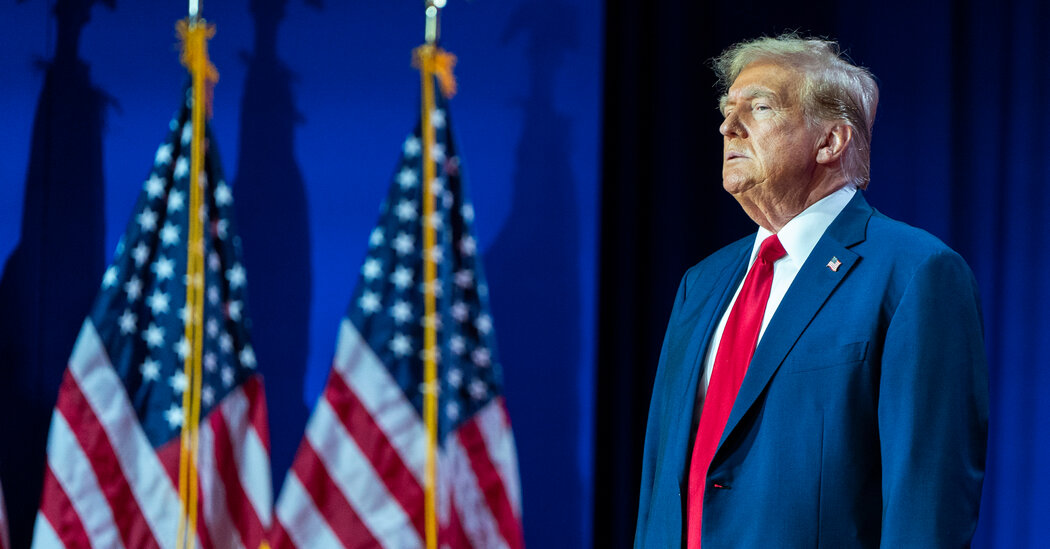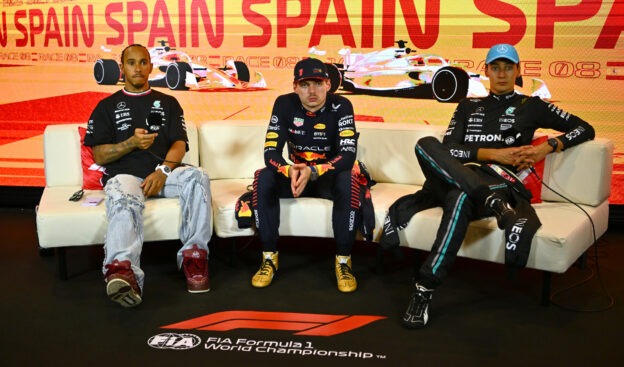Understanding The Dynamics Of The F1 Drivers' Press Conference

Table of Contents
The Pre-Conference Preparation and Strategy
The success of an F1 Drivers' Press Conference hinges heavily on meticulous preparation. Teams invest significant time and resources to ensure their drivers are well-equipped to handle any situation.
Team Briefing and Messaging
Teams meticulously prepare drivers before the press conference. This involves:
- Defining key messages: These messages are carefully crafted to highlight team achievements, address recent controversies, and shape the narrative surrounding the team and its drivers. The focus might be on new car developments, driver performance, or upcoming race strategies.
- Addressing potential controversial questions proactively: Teams anticipate challenging questions from the media and develop clear, concise, and consistent responses. This avoids contradictory statements and maintains a unified front.
- Coordinating talking points across the team: All team members, including engineers and management, are briefed on the key messages to ensure everyone is on the same page and avoids conflicting statements. This coordinated approach presents a united and professional image.
Media Training for Drivers
Drivers undergo rigorous media training to hone their communication skills. This training encompasses:
- Handling difficult questions effectively: Drivers are taught how to deflect potentially damaging questions, answer honestly without revealing sensitive information, and maintain composure under pressure. This involves techniques for buying time, rephrasing questions, and calmly steering the conversation back to their key messages.
- Projecting the desired image to sponsors and fans: Drivers are coached on how to present themselves professionally, communicate their passion for racing, and connect with the audience. This image management is crucial for maintaining sponsor relationships and building a strong fan base.
- Avoiding potentially damaging statements: Drivers learn to be mindful of their words, avoiding inflammatory language, controversial opinions, or any comments that could harm their reputation or the team's image. This includes understanding the implications of social media and the potential for comments to be taken out of context.
Analyzing the Media Landscape
Before the press conference, teams conduct thorough media analysis to anticipate potential questions. This involves:
- Monitoring competitor actions: Teams track their rivals' performance and media strategies to understand their strengths and weaknesses and prepare for potential comparisons. Understanding the competitor's narrative helps shape the team's responses.
- Identifying key themes in the media coverage: Teams analyze recent news articles, social media trends, and fan discussions to pinpoint recurring themes and potential areas of focus from the media. This proactive approach helps prepare the drivers for specific questions and allows them to address concerns head-on.
The Dynamics of the Press Conference Itself
The press conference itself is a complex interplay of personalities, strategies, and media dynamics.
The Role of the Moderator
The moderator's role is crucial in maintaining order and ensuring fairness. They:
- Manage the flow of questions: The moderator ensures all journalists have a fair opportunity to ask their questions and prevents the press conference from becoming chaotic or dominated by a few individuals.
- Ensure fairness to all drivers: The moderator distributes questions evenly among the drivers, prevents one driver from dominating the session, and keeps the atmosphere relatively neutral.
- Keep the press conference on schedule: Time management is essential, and the moderator must efficiently navigate the questions to stay within the allotted time.
Driver Interactions and Body Language
Observing driver interactions and body language can reveal unspoken tensions or team dynamics. These nonverbal cues can:
- Highlight existing rivalries: Subtle gestures, facial expressions, and interactions can reveal underlying tension or competition between drivers. This can add an element of excitement for viewers and offer deeper insight beyond the spoken words.
- Showcase team dynamics: The way drivers interact with each other and their team representatives can indicate the team's overall atmosphere and working relationship.
- Reveal underlying tensions: Even seemingly minor interactions can expose underlying conflicts or disagreements within the team. Careful observers can sometimes pick up on subtle signs of stress or frustration.
The Importance of Question Selection
Journalists play a significant role in shaping the narrative through their question selection. They aim to:
- Elicit revealing responses: Journalists carefully select words and phrasing to provoke honest and insightful responses from the drivers, often focusing on specific performance aspects or controversial events.
- Highlight specific controversies: Questions can be crafted to bring attention to specific incidents or conflicts, potentially stirring debate and shaping public opinion.
- Shape public narratives: Through strategic questioning, journalists can influence the overall message and narrative conveyed to the public, sometimes highlighting particular strengths or weaknesses of a driver or team.
The Post-Conference Analysis and Impact
The press conference's influence extends far beyond the event itself.
Media Coverage and Interpretation
The media's interpretation and framing of the press conference profoundly impacts:
- Public perception of drivers and teams: The headlines, news articles, and social media posts following the conference can heavily influence public perception, highlighting certain quotes or incidents to shape a narrative.
- Sponsor relationships: Positive coverage enhances the team's and drivers' appeal to sponsors, while negative coverage might strain these important relationships.
- Future race strategies: The media's analysis can subtly influence future race strategies by highlighting strengths, weaknesses, and potential areas for improvement.
Social Media Amplification
Social media plays a crucial role in amplifying key moments and shaping public opinion.
- Viral moments and memes: Short clips or quotes from the press conference can go viral, creating memes and generating widespread discussion.
- Rapid dissemination of information: Social media platforms facilitate the instantaneous spread of news and opinions related to the press conference, potentially influencing wider public perception.
- Potential for misinformation: The rapid spread of information can also contribute to the spread of misinformation or misinterpretations of the events.
Long-Term Effects on Brand Reputation
The press conference's outcome can influence a driver or team's brand reputation for months, impacting future endorsements and sponsor deals. A well-handled press conference can build trust and enhance brand image, while a poorly managed one can damage reputation and create lasting negative consequences.
Conclusion
Understanding the dynamics of the F1 Drivers' Press Conference provides invaluable insight into the complexities of Formula 1 racing beyond the track. From pre-conference preparation and strategic messaging to the post-conference media analysis and social media impact, each element plays a crucial role in shaping public perception. By analyzing these intricate dynamics, we can gain a deeper appreciation for the strategic depth and political maneuvering inherent in this high-stakes environment. So next time you watch an F1 Drivers' Press Conference, pay close attention – you might be surprised by what you discover beyond the carefully crafted words. Further research into specific press conferences and driver interviews will deepen your understanding of the F1 Drivers' Press Conference and the world of Formula 1.

Featured Posts
-
 Rising Gold Prices A Reaction To Trumps Trade War Rhetoric
May 26, 2025
Rising Gold Prices A Reaction To Trumps Trade War Rhetoric
May 26, 2025 -
 F1 Drivers Press Conference Key Moments And Highlights
May 26, 2025
F1 Drivers Press Conference Key Moments And Highlights
May 26, 2025 -
 Dc Black Pride Where Culture Meets Protest And Celebration Follows
May 26, 2025
Dc Black Pride Where Culture Meets Protest And Celebration Follows
May 26, 2025 -
 Elon Musks Dogecoin Holdings A Closer Look
May 26, 2025
Elon Musks Dogecoin Holdings A Closer Look
May 26, 2025 -
 Rethinking Middle Management Why They Matter In Todays Workplace
May 26, 2025
Rethinking Middle Management Why They Matter In Todays Workplace
May 26, 2025
